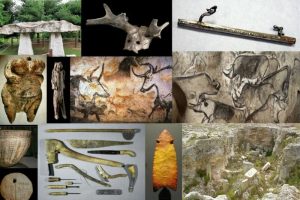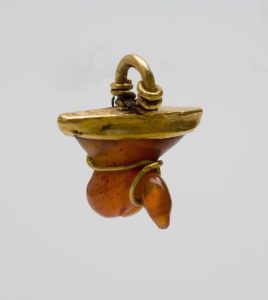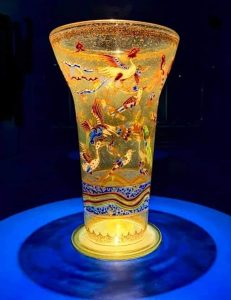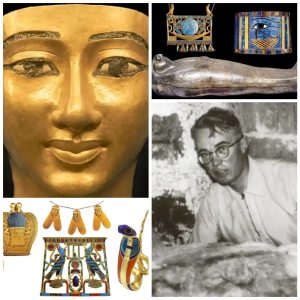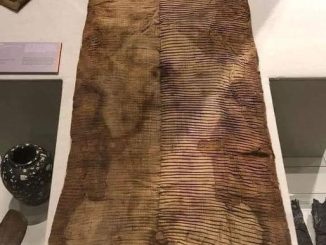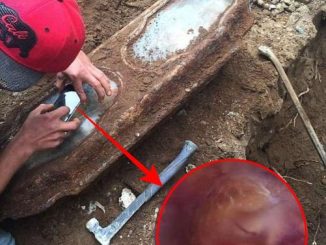
The allure of ancient artifacts often lies not only in their exquisite craftsmanship but also in the stories they hold. One such captivating artifact is the Gold Diadem with Carnelian Herakles Knot, dating back to the 3rd-2nd century BC and housed at The Walters Art Museum. Join us as we delve into the history and significance of this remarkable diadem, uncovering the artistic mastery and cultural context of ancient Macedonia.
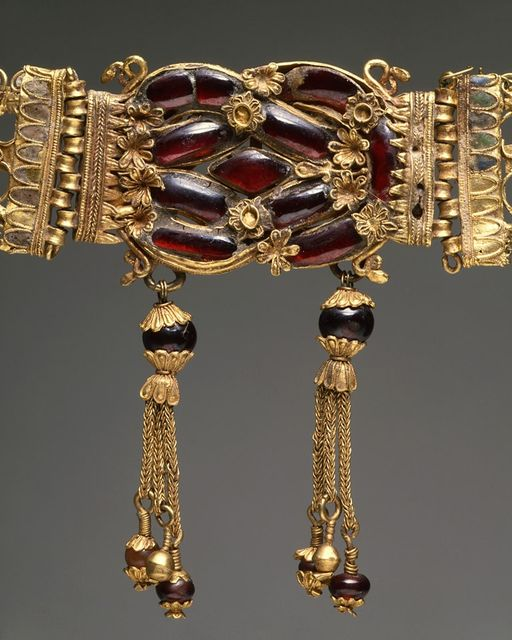
The Gold Diadem: A Masterpiece of Ancient Craftsmanship The Gold Diadem with Carnelian Herakles Knot is a testament to the skilled artisans of ancient Macedonia. Crafted from gold and adorned with carnelian, this diadem features an intricate design known as the Herakles knot—a symbol associated with strength and heroism in Greek mythology. The meticulous craftsmanship of the diadem reflects the artistic sophistication of the Hellenistic period, highlighting the fusion of cultural influences in ancient Macedonia.

Symbolism and Cultural Significance The Herakles knot depicted on the diadem carries symbolic meaning rooted in Greek mythology. Herakles, known for his heroic exploits and strength, is often depicted with knots symbolizing his courage and determination. The diadem’s use of carnelian—a semi-precious stone revered for its protective properties—adds depth to its symbolism, suggesting themes of power, protection, and divine favor. This blend of mythological and cultural symbolism underscores the significance of the diadem within its historical context.
Historical Context and Origin The Gold Diadem with Carnelian Herakles Knot provides insights into the social and cultural milieu of ancient Macedonia during the Hellenistic era. Diadems were worn as symbols of status and power by royalty and elite individuals, reflecting the opulence and sophistication of Macedonian society. The diadem’s design and materials likely originated from workshops catering to the aristocracy, showcasing the intersection of art, craftsmanship, and aristocratic patronage in ancient Macedonia.
Archaeological Insights and Preservation The diadem’s preservation at The Walters Art Museum offers a valuable opportunity for archaeological study and appreciation. Archaeological discoveries like this diadem enrich our understanding of ancient Macedonian artistry and craftsmanship. Through meticulous conservation and scholarly research, museums contribute to the preservation and interpretation of artifacts, offering a window into the rich tapestry of ancient civilizations. The study of artifacts like the Gold Diadem with Carnelian Herakles Knot deepens our appreciation for the cultural heritage and artistic achievements of ancient Macedonia.
In conclusion, the Gold Diadem with Carnelian Herakles Knot represents more than a mere adornment—it embodies the artistic prowess, cultural symbolism, and historical context of ancient Macedonian civilization. As we unravel the mysteries of this exquisite artifact, we gain a deeper appreciation for the intersection of mythology, craftsmanship, and aristocratic patronage in the Hellenistic world. Archaeological discoveries like this diadem continue to inspire curiosity and exploration, enriching our understanding of the past and highlighting the enduring value of archaeological research and preservation.
